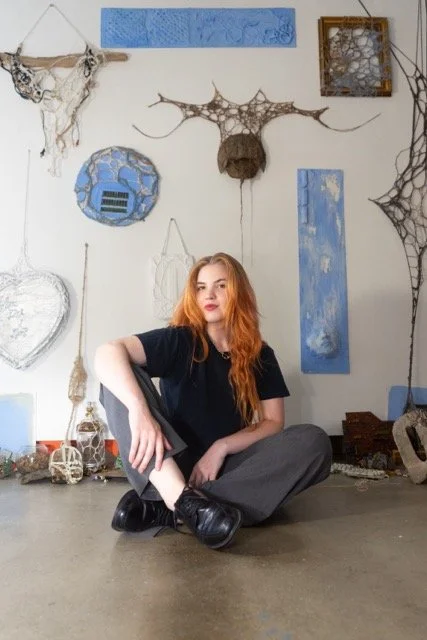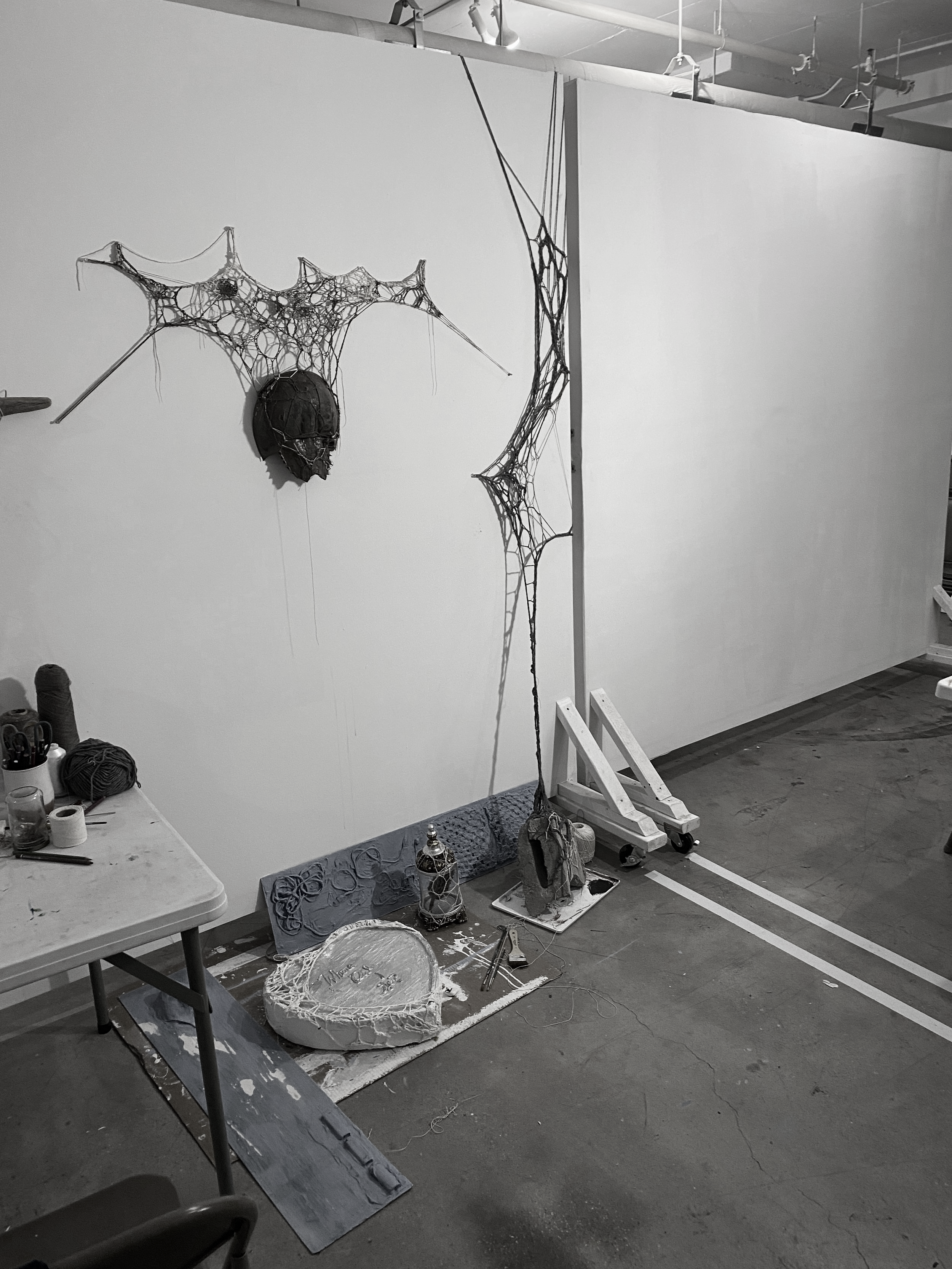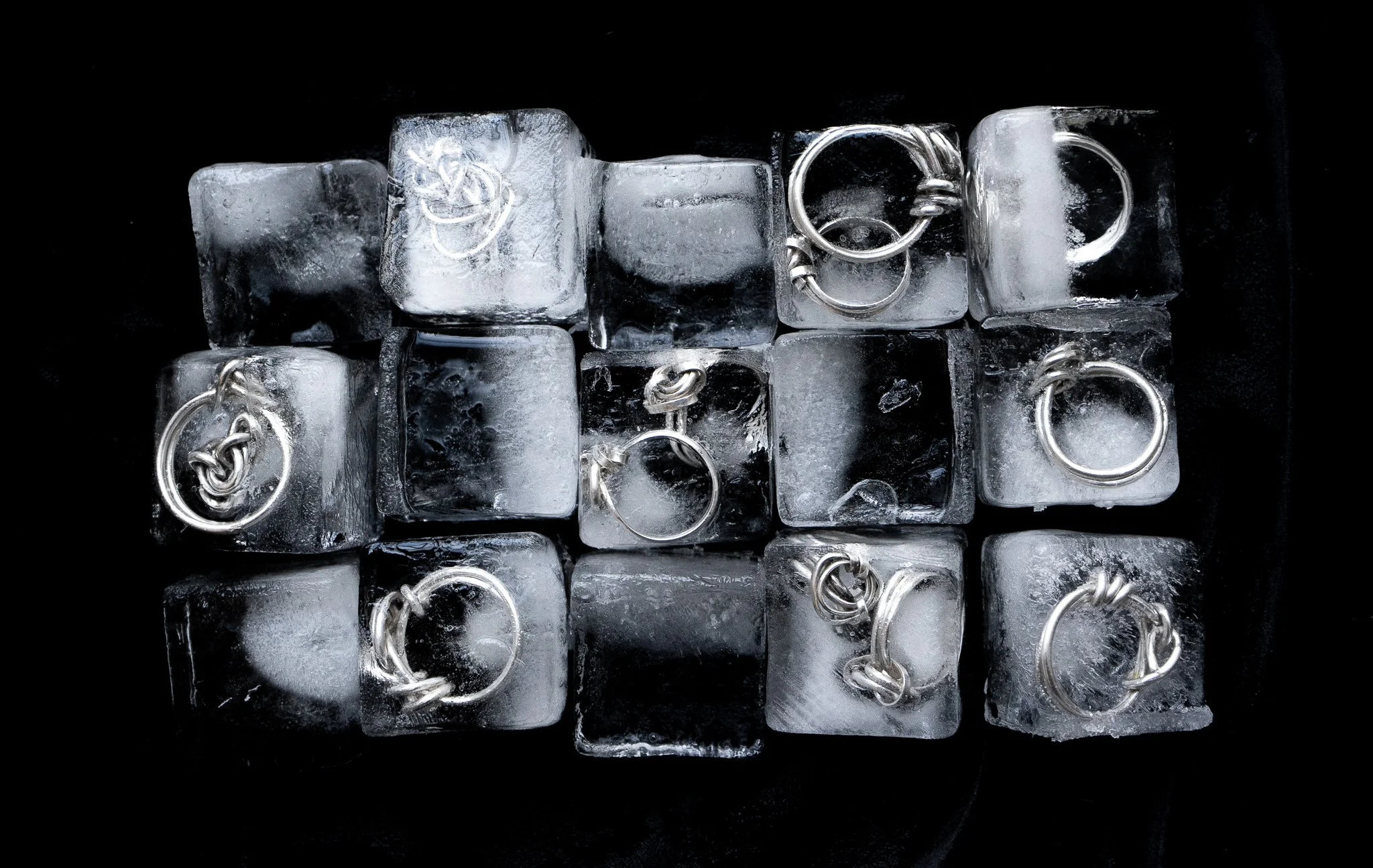Veronica Wolfgang is a multi-hyphenate artist and designer.
Veronica Wolfgang (b. 2001) is a multidisciplinary sculptor and textile artist based in Brooklyn, NY. Utilizing sculpture, installation, and photography, they investigate our collective relationship with everyday objects, desire, memory, obsession, and each other.
Wolfgang is substantially influenced by the craft techniques they grew up surrounded by. With a family of folk artists and skilled artisans, they began their artistic education before traditional schooling. Strong foundations in folk craft led to a focus on sustainability within their practice as they transform found objects and textile waste into highly tactile articles of fascination.
Choosing to leave high school early at 16, Wolfgang earned their BA in Philosophy and History at just 17. After moving to Brooklyn full-time in 2019, they went on to complete their MA in Philosophy just after their 21st birthday, with a focus in political theory and Post-Structuralist analysis of labor. Their academic research and writing continues to play a vital role in their artistic pursuits.
Living many lives since arriving in New York, they lead a successful career as a model and art director while designing wearable art and 1:1 jewelry through their label, bywolfgang. As a second-generation jewelry designer, Wolfgang aims to maintain a sculptural and avant-garde approach to design. Working in only high quality, hypoallergenic and heirloom metals, they aim to create art for life.
Wolfgang has participated in residency programs in North and Central America. Their design work has been extensively shown throughout New York City, notably at Future Treasure x 3NY in November of 2024. Their fine art has been featured in galleries across New York including Brooklyn Waterfront Artists Coalition, CultureLab LIC, & Carrie Able Gallery.
Please Contact for Full C.V.
Pulls for editorials and couture commissions are available on request, please reach out for more information.
Artists Statement
“I have always been a highly tactile person. Touch is a grounding force and a gentle reminder of our present moment. I create to understand. To foster this obsession in a way that won’t drown me.
The speed of our current world makes me nauseous and I know I’m not the only one. In my work, I embrace what machines simply cannot replicate. Crochet and many fiber arts can only be done by the human hand. Denying mechanical reproduction; like handwriting, they are unique to their creator.
Utilizing found objects and post-consumer textiles allows me to create something fascinating with things we typically ignore. I want to feel like the fibers are reclaiming each object – becoming something new.
The way we decay is undeniably elegant – gently falling back to the earth. I think about how this also happens with stories and legacies.
I began chemically crystalizing found objects to explore how we share stories (and bits of ourselves) through time & space. Discarded paperbacks and worn-through shoes suspended in time are representative of a life lived. A collection of unreadable and brittle forms. Modern fossils. Too fragile to be held. Their story will never be understood again.
Held in delicate yet inescapable webs, I am fabricating artifacts. As we separate from the stories and ways that have held us, we lose sight of what it is to be a part of a collective something. A collective story. Will we discover a new technology to remember ourselves?”
-
Federici, S. (2004). Caliban and the Witch. Autonomedia.
Kundera, M. (1999). The Unbearable Lightness of Being (M. H. Heim, Trans.). HarperCollins.
Popova, M. (2019). Figuring. Pantheon Books




